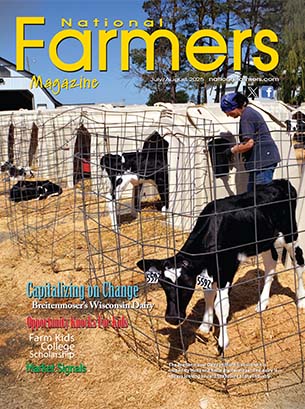Challenging Organic Conditions, Selling Grains Into Craft Brewery Markets
By Mike Schulist
Organic grain markets continue to see softening prices, especially in organic corn. There are many reasons, but topping the list is supply and demand. Current organic corn prices reflect last year’s bumper crop. A decrease in demand and organic imports are also taking their toll. Organic farming is not easy, and not everyone who transitions into organic will survive these low prices.
On the positive side, NForganics was able to sell a fair number of soybeans and milling wheat bushels, and I do believe the organic corn market will turn around. The Montana HRSW project is doing well. Many thanks to Bruce Shultz for his efforts as boots on the ground, helping to get that project up and running, and then handing it off to Theresa Seiler and myself.
Gilbert Williams of Spring Green, Wisconsin has joined NForganics. Jim Tesch officially retired on May 1. Gilbert Williams brings a wealth of knowledge in the wheat and specialty grains markets.
By Gilbert Williams
In the past 10 years, there has been a dramatic growth in small-scale, locally sourced grain millers, brewers, maltsters and distillers. These processers are most often consuming organic grains in 2000 pound tote sacks.
In the craft grain market, millers most often use stone milling that goes into artisan sourdough breads, made by local bakers sometimes associated with the miller. Distillers consume corn and rye for bourbon or whisky and low protein wheat for gin and vodka. Maltsters use primarily two row barley. The malting process allows the enzymes of the sprouted grain to work during the mash stage of brewing or distilling.
Supplying quality grain through National Farmers NForganics means marketing starts before harvest. The following recommendations are what lead to the premium prices that craft producers will pay for.
-
- Clean out your grain bin and combine before harvest. Sweep out the bin, blow out the combine, buggy and bin load-out. Test your dryer blower.
- Use a hand-held moisture meter when harvest is near. Have the combine clean when grain moisture level is below your drying capacity.
- When harvesting, collect a good composite sample, every time the hopper empties take a given amount, put it in a clean 5-gallon bucket.
- At the end of harvest, mix the bucket. Store the sample bucket where rodents do not have access. Let the sample bucket dry down as your grain is drying in the bin. Verify that your sample moisture is the same moisture that you have in the bin after drying.
- When dry send a gallon size bag to your grain lab. If you are not certain of what parameters to have reported, talk to your lab, or ask us, we can help with this.










